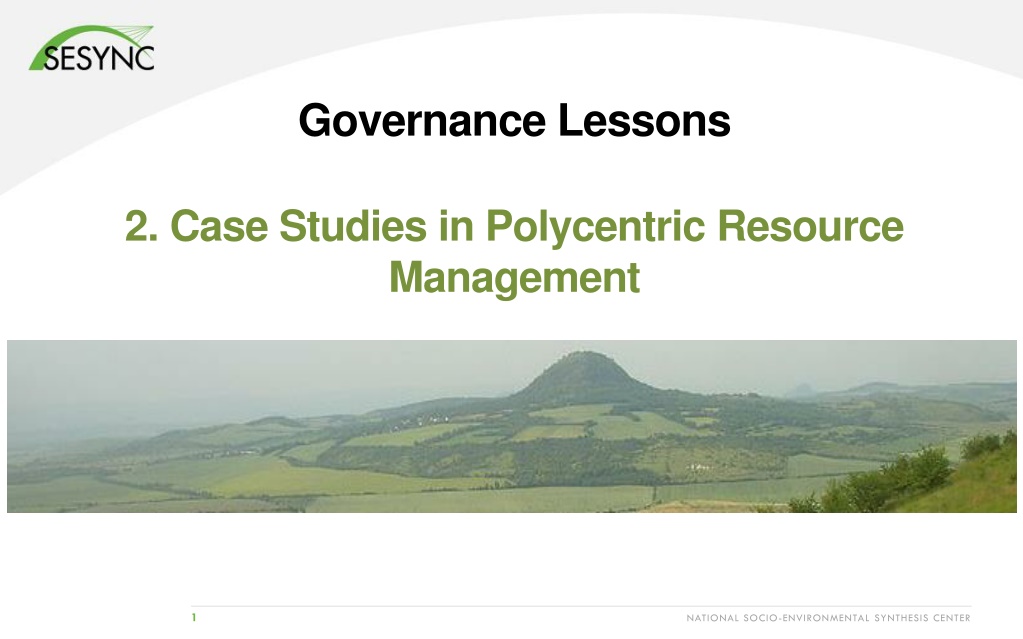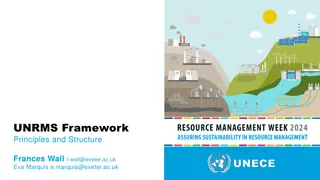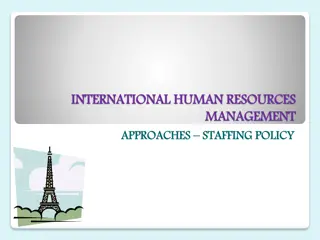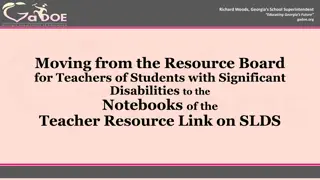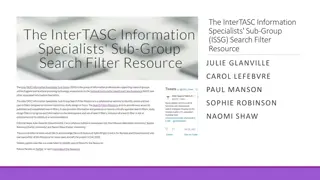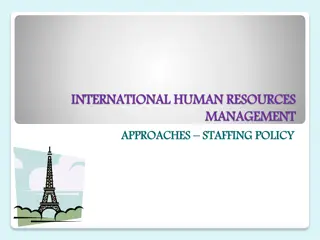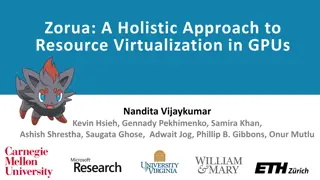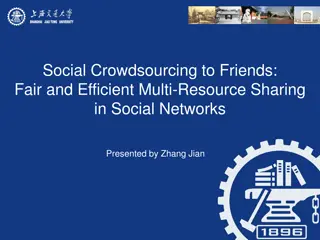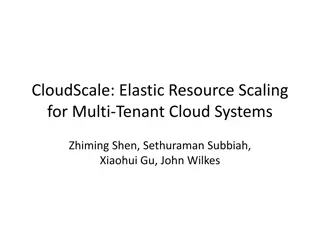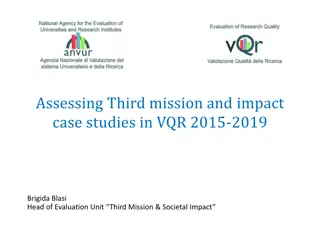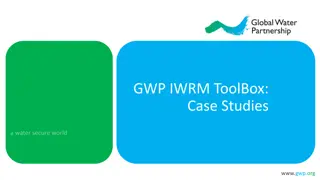Polycentric Resource Management: Case Studies and Critical Elements
Explore the concept of polycentric governance in resource management through case studies and critical elements essential for success, focusing on communication, trust, decision-making centers, cooperation, and stakeholder representation.
Download Presentation

Please find below an Image/Link to download the presentation.
The content on the website is provided AS IS for your information and personal use only. It may not be sold, licensed, or shared on other websites without obtaining consent from the author. Download presentation by click this link. If you encounter any issues during the download, it is possible that the publisher has removed the file from their server.
E N D
Presentation Transcript
Governance Lessons 2. Case Studies in Polycentric Resource Management 1 NATIONAL SOCIO-ENVIRONMENTAL SYNTHESIS CENTER
Polycentric Governance: Critical Elements of Success Communication and Trust: Increases cooperation as it seeks socially optimal strategies, exchange of promises, forms expectations of others behavior, adds value to payoffs, reinforces norms, and promotes development of group identity (Cole 2015; Ostrom 2003). 2 NATIONAL SOCIO-ENVIRONMENTAL SYNTHESIS CENTER
Polycentric Governance: Attributes Attribute 1: Multiple, overlapping decision-making centers with some autonomy Features: Governance is shared among federal, state, public, and community agencies Each group constitutes a distinct decision-making center with autonomy Attribute 2: Established processes of cooperation, competition, and conflict resolution Features: Permit requirements and due process to regulate different types of ecosystem use Data sharing, workshops, open communication and arbitration of conflict (Adapted from Acton et al., 2021; Carlisle and Gruby, 2017; Epstein et al., 2015) 3 NATIONAL SOCIO-ENVIRONMENTAL SYNTHESIS CENTER
Social Fit: Enabling Conditions Condition 1: Governance structure includes diverse institutions Features: Agencies have distinct cultures, distinct rules, and norms to carry out mandates Condition 2: Governance designers seek cross-scale linkages Features: Linkages across jurisdiction, governance level, and geography Deliberation, collaboration, and learning; cross-cultural sharing increase over time Condition 3: Stakeholders represent many levels across political jurisdictions Features: Key representatives come from federal, state, community, and tribal organizations Condition 4: Jurisdiction of actors is coterminous with the boundaries of the system Features: Vast or complex areas have holistic ecosystem-based governance that may be distinct from specific ecological, cultural, or political boundaries (Adapted from Acton et al., 2021; Carlisle and Gruby, 2017; Epstein et al. 2015) 4 NATIONAL SOCIO-ENVIRONMENTAL SYNTHESIS CENTER
Social Fit: Dimensions Dimension 1: Institutions interplay with values, beliefs, and social customs of groups Features: Governance structure aligns with values and norms of various actors Inter-agency tension in the early governance system can be alleviated over time Dimension 2: Governance designers account for stakeholder expectations and needs Features: Actors have different worldviews, values, norms, and policy interpretations that can conflict Over time collaboration and communication create better governance outcomes Tension resulting from ontological differences may remain xDimension 3: Governance system resolves conflicts and promotes social learning Features: Actors from different levels work together to promote institutional innovation and learning Function can be eroded by overturn of personnel that results in lost memory, teaching, and learning (Adapted from Acton et al., 2021; Carlisle and Gruby, 2017; Epstein et al. 2015) 5 NATIONAL SOCIO-ENVIRONMENTAL SYNTHESIS CENTER
